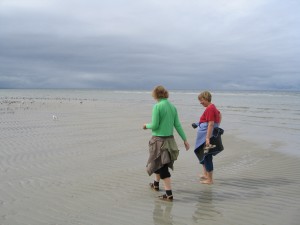 May 29, 2010
May 29, 2010
There has been some discussuion in the media about some pharmacies considering and reconsidering whether to offer genetic testing for purchasing. Why would we want to know about our genetic make-up when it comes to health? Why would anyone care if we paid money to purchase genetic testing without our doctor recommending it? How should we be talking about this issue?
Knowing information about our genetic might be one more way to promote our health. As we discuss across the entire book, Talking about health, this era of personalized medicine makes it possible to predict our risk for some conditions. However, as we have discussed in this blog before, knowing that we have genetic contributors to heart disease or that we do NOT have these contributors does not determine that we will or will not get heart disease.
So one reason that there may be concern about giving us access to genetic information through personal purchasing power is that having the test may give some of us a false sense of security and some of us a false sense of ‘doom’ about risk for disease. We may not use the information in ways intended. We may lose sight of the information being just one indicator of possible risk. Remembering that the era of personalized medicine is NOT about single genes predicting absolutely that one will get a disease is a critical part of realizing any benefit from knowing genetic information about our health.
Another often discussed issue is ‘who owns our genetic information?’ While this has been frequently discussed based on concerns about health insurance, we hear less discussion in the media about disclosure to family members. Once we know our genetic information, who should we share the information with in our families? After all, any information we have has some relationship to the biological make-up of other members of our biologically related kin. Should there be any responsibility for telling others about what we learn? Who decides?
We also hear no conversations about the fact that tests can be ‘wrong.’ How should results be treated? If we are found to have genetic predictors of increased risk for heart disease, for example, should we be tested again to be sure the results were accurate? Tested with the same test we purchased? If we did not have positive test results, should be be tested again to be sure that we don’t have the genes? What are the levels of accuracy associated with these tests? How much faith can we place in the results? Does our own human error enter into the equation?
So, yes, we need to be talking about these issues alongside our conversations about making genetic testing available to use in our local drug stores…..

 May 19, 2010
May 19, 2010 May 12, 2010
May 12, 2010 May 3, 2010
May 3, 2010 April 25, 2010
April 25, 2010 April 21, 2010
April 21, 2010 April 13, 2010
April 13, 2010 April 7, 2010
April 7, 2010 March 30, 2010
March 30, 2010 March 16, 2010
March 16, 2010